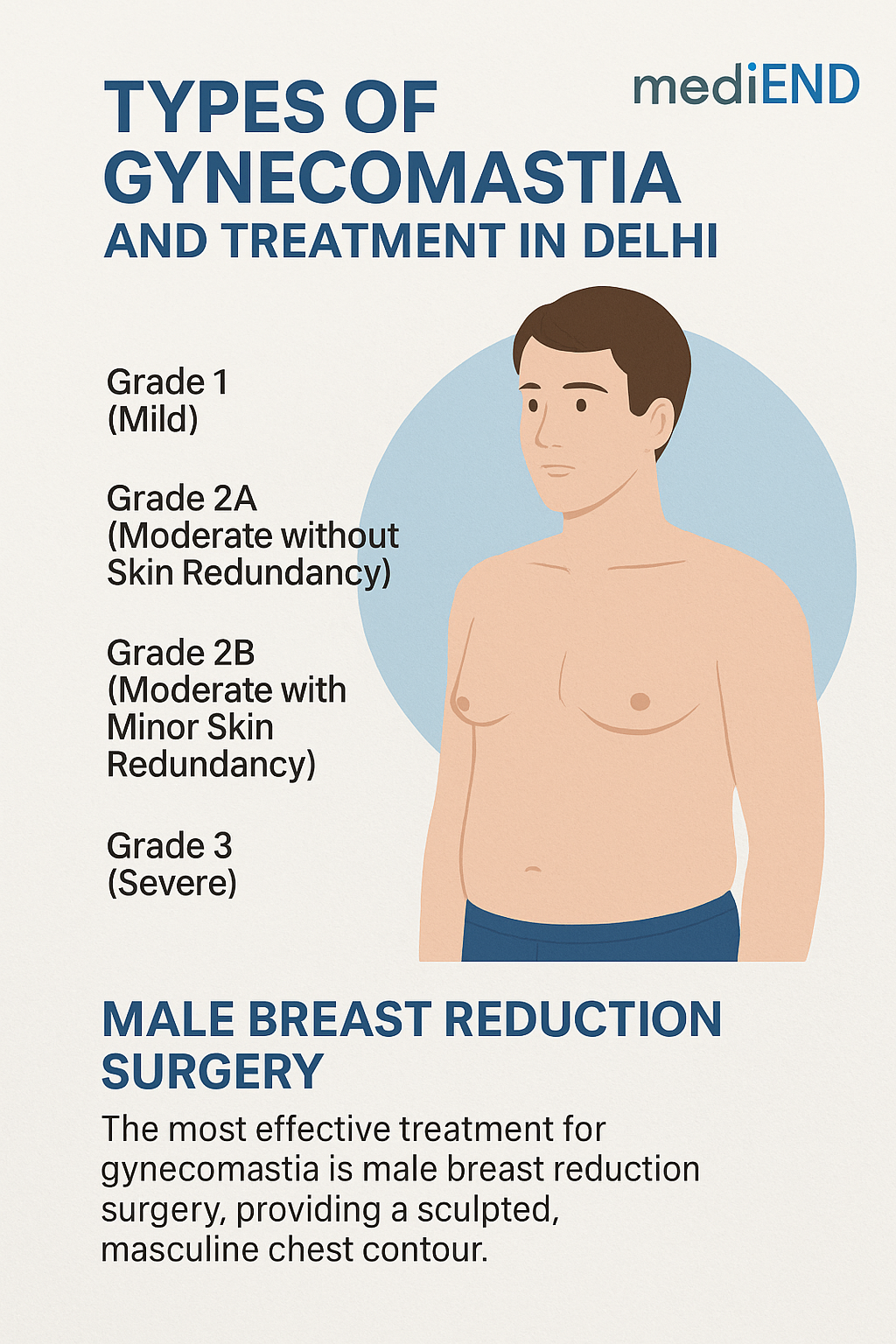Tips for faster recovery after gynecomastia surgery

Tips for Faster Recovery After Gynecomastia Surgery – By Mediend
Gynecomastia surgery is often referred to as male breast reduction surgery and is a life-changing procedure for men who want to contour their chest. While the surgery is generally quick and easy, the recovery period is very important in getting the best results. At Mediend, we believe that recovery is as important as the surgery, and that is why we have put together the most vital tips for faster recovery after gynecomastia surgery so that you can heal effectively and regain your confidence after the procedure.
Understanding Gynecomastia Surgery Recovery
With time, your body will undergo significant changes after having male breast reduction surgery. The recovery period generally lasts between a few weeks, after which most patients should be able to resume their normal activities in 2 to 4 weeks. In any case, optimal post-operative recovery will make a significant difference when it comes to the speed of recovery, discomfort, and the chances of complications.
1. Follow Post-Operative Instructions Carefully
Immediately after your surgery, your surgeon will give you precise aftercare instructions. These will detail caring for your incisions, medication schedules, and follow-up appointments. Recovery can be greatly enhanced by strictly following these instructions.
Key Tips:
-
Maintain cleanliness and dryness in the surgical area.
-
Follow the medication regimen without deviations.
-
Never miss follow-up appointments.
2. Wear Compression Garments
Wearing a compression garment post-gynecomastia surgery is a critical tip for faster recovery. These garments help:
-
Reduce swelling and bruising
-
Improve the circulation of blood.
-
Support the healing tissue.
-
Promote skin retraction and contouring.
Continuous wearing of the garment for the first few weeks post-surgery is typical. It can only be removed during short intervals specified by the surgeon.
3. Manage Pain and Swelling
Mild to moderate discomfort, swelling, and bruising is normal after male breast reduction surgery. Effective management of this entails:
-
Using prescribed pain relief medication.
-
The first 48 hours should include the use of cold compresses.
-
Avoid anything that will elevate blood pressure or put a strain on the chest area.
Reducing inflammation allows you to heal faster and see your final results ahead of schedule.
4. Keep a Healthy Diet and Drink Plenty of Fluids
A proper and balanced diet is as important in the recovery process as the proper steps you take during recovery. Effective nutrition will assist you in the battle against excess inflammation as well as the speedy recovery of the tissues that need to be repaired.
Important:
-
Foods rich in protein: meats, eggs, and legumes.
-
Vitamin C and zinc to aid your recovering tissues.
-
Water helps to flush out waste, and so drinking plenty of water will aid you during recovery.
Do not consume overly processed foods, excess salt, or alcohol during your recovery period.
5. Ensure a Good Amount of Sleep
Sleep is important for recovery. Energy is necessary for the body to be repaired, so make sure you:
-
Get 7-8 hours of sleep daily
-
If you feel fatigued, take short naps
-
Sleep on your back, elevated to assist in reducing swelling
Heavy lifting, strenuous activities, and upper body workouts need to be avoided for a minimum of 3-4 weeks unless cleared by your surgeon.
6. Resume Light Activity Gradually
In addition to resting, gentle movements can aid in the recovery process. Begin slow walks around your house 24–48 hours after surgery to:
-
Boost blood circulation
-
Prevent blood clots
-
Alleviate stiffness
Increase your activity level gradually. If you begin to experience any discomfort or pain, stop immediately.
7. Avoid Smoking and Alcohol
Smoking can slow down blood circulation, which can hinder the healing process. Like alcohol, smoking can also hinder medications and cause swelling. Avoid alcohol and smoking for a smoother and faster recovery. It is recommended to stop smoking and alcohol consumption two weeks prior to surgery and one month post-surgery.
8. Monitor For Unusual Symptoms
Although complications are rare, having close monitoring of your body is crucial. Reach out to your surgeon if you experience:
-
Excessive swelling or bruising
-
Unrelenting pain beyond the usual post-operative discomfort, even with pain medication
-
Symptoms of infection (fever, redness, or pus)
-
Chest unevenness that continues to worsen.
Proactive action can help avoid complications and ensure a smoother recovery process.
9. Healing Time: Stay Patient
Wanting immediate results is only human. Unfortunately, healing is seldom instantaneous. The initial inflammation may hide your chest's true shape for a few weeks. Generally, the results of male breast reduction surgery manifest fully within a 3 to 6 month period.
Do bear in mind, a successful recovery isn’t only in the speed. It is in how well your body is able to heal in a natural way, using the time provided.
10. Trust the Process, Your Provider, Your Body
The recovery process is unique to each individual; however, the healing journey is typically accompanied by great results for most patients when proper care is provided. Always trust the process, and do not hesitate to speak up to your medical team during your healing journey.
At Mediend, we understand that each patient comes with very specific concerns and requires distinct support. Therefore, we also provide thorough pre-surgery consultations. With every patient, we aim to provide expert surgical care and compassionate postoperative support. Our commitment starts in the operating room and continues well beyond, as we guide patients from their first consultation to full recovery.





